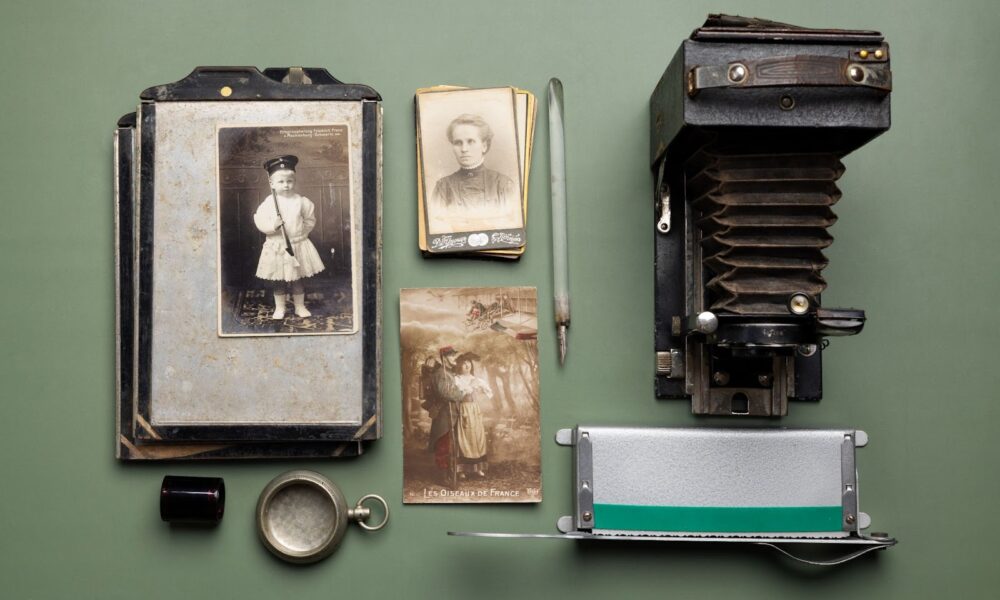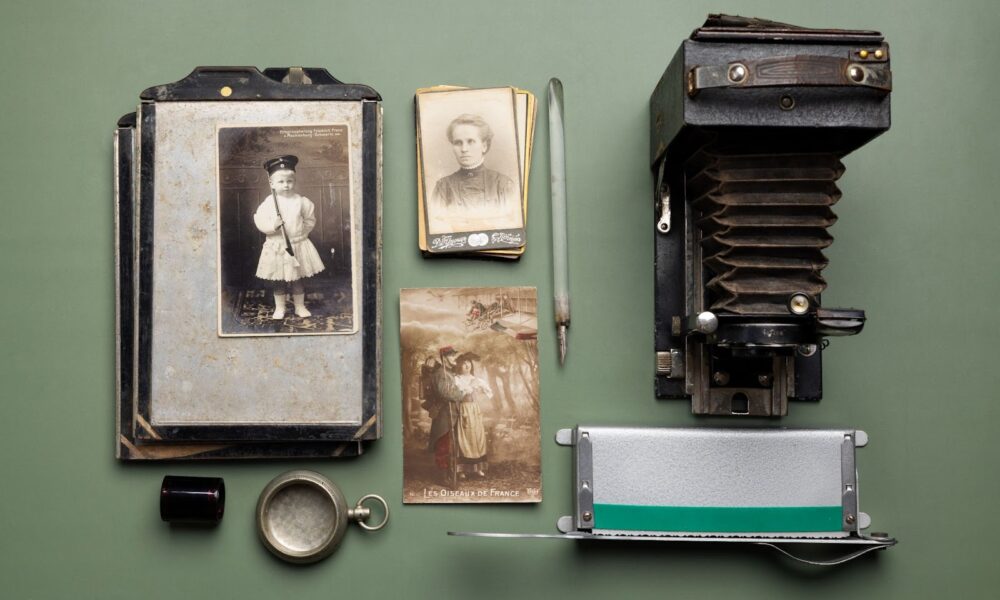In the contemporary era of digital imaging, characterized by the seamless capture, manipulation, and dissemination of visual content through a mere touch on a screen, the nostalgic charm of photographs from yesteryears often eludes our attention. Among the treasured artifacts of photographic antiquity lies the cabinet photo, a tangible keepsake that once adorned the mantelpieces and shelves of homes across the globe, evoking memories of bygone times.
Exploring the Fascinating World of Cabinet Photography
Cabinet photography unveils a captivating chapter in the history of visual artistry, capturing moments frozen in time with meticulous detail and artistic flair. These exquisite photographic prints, delicately mounted on sturdy cardboard backings, epitomize an era of elegance and nostalgia, captivating generations with their timeless charm.
Understanding Cabinet Photos: A Dive into History and Form
Delving into the essence of a cabinet photo unveils its unique characteristics and historical significance:
- Dimensions and Composition: Typically measuring around 4.25 by 6.5 inches, though sizes may vary, cabinet photos boast a perfect balance of size and portability, making them ideal for display and sharing;
- Popularity and Era: Flourishing from the 1860s to the early 1900s, these photographs emerged as prized possessions, gracing the interiors of homes in ornate cabinets, curio displays, or adorning mantelpieces;
- Purpose and Sentimentality: Acting as cherished keepsakes, cabinet photos immortalized loved ones, ancestors, or revered figures, serving as poignant reminders of cherished memories and esteemed individuals.
Tracing the Evolution of Cabinet Photography
The journey of cabinet photography is a testament to the evolution of photographic techniques and societal trends:
- Roots in Early Photography: Stemming from predecessors like daguerreotypes and tintypes, cabinet photos represented a more accessible and practical form of visual documentation, democratizing the art of portraiture;
- Rise of Carte de Visite: The emergence of carte de visite—a smaller, more affordable photographic format—paved the way for the widespread popularity of cabinet photos. While cartes de visite were suitable for intimate exchanges, cabinet photos offered ample space for intricate detailing and artistic expression;
- Artistic Flourish and Formal Portraiture: With their larger dimensions, cabinet photos became the preferred medium for formal portraits and group shots, allowing photographers to showcase their skills in composition, lighting, and posing.
Tips for Collectors and Enthusiasts
For those intrigued by the allure of cabinet photography, here are some valuable insights and recommendations:
- Condition Matters: When acquiring cabinet photos, prioritize those in good condition, as signs of damage or deterioration can diminish their aesthetic and historical value;
- Research and Authentication: Invest time in researching the photographer, subject, and historical context of each cabinet photo to uncover hidden stories and authenticate their provenance;
- Variety and Diversity: Explore a diverse range of cabinet photos, from family portraits to celebrity memorabilia, to appreciate the breadth and depth of this fascinating photographic genre.
Production Process: Capturing Moments Through Artistry
In the intricate world of cabinet photography, skilled artisans employed a myriad of techniques to immortalize moments in time. Through a fusion of art and science, they transformed mundane scenes into timeless treasures. Let’s delve into the captivating production process:
- Photographic Techniques:
- Albumen Prints: A delicate process involving the use of egg whites to bind light-sensitive chemicals to paper, resulting in stunning clarity and detail;
- Gelatin Silver Prints: Utilizing gelatin-coated paper and silver salts to create images with rich tonal depth and longevity;
- Carbon Prints: An intricate method using carbon pigments to produce images known for their permanence and exquisite detail.
- Artistry in Composition:
- Meticulous Composition: Photographers meticulously arranged backdrops, props, and lighting to evoke the desired atmosphere;
- Large-Format Cameras: These formidable tools allowed for unparalleled precision and clarity in capturing subjects.
- Finishing Touches:
- Mounting on Cardboard Backing: Photos were secured onto sturdy cardboard backings, ensuring longevity and stability;
- Decorative Embellishments: Some cabinet photos featured ornate borders or embossed designs, elevating them from mere portraits to works of art.
Cultural Significance: Windows to the Past
In the grand tapestry of the Victorian era, cabinet photos served as more than mere images; they were portals to societal aspirations and historical narratives. Let’s unravel their cultural significance:
- Status Symbols:
- Families proudly displayed cabinet photos as markers of their prosperity and refinement, symbolizing their place in society’s hierarchy;
- The choice of photographer and style of portrait often reflected one’s social standing and aspirations for prestige.
- Collective Memory:
- Cabinet photos of political figures, celebrities, and significant events were avidly collected and circulated, shaping the collective memory of the era;
- They provided a tangible connection to historical figures and events, bridging the gap between past and present.
- Documenting History:
- From formal portraits to candid snapshots, cabinet photos offer invaluable insights into the fashions, customs, and daily lives of bygone eras;
- They serve as invaluable historical documents, preserving moments both monumental and mundane for generations to come.
Legacy and Collectibility: Exploring the Enduring Charm of Cabinet Photos
In an era dominated by digital photography, cabinet photos stand as timeless relics of a bygone age, retaining their allure and significance in the hearts of collectors and history enthusiasts alike. Despite the advent of modern technology, these vintage gems continue to captivate with their exquisite craftsmanship, evocative aesthetics, and unparalleled nostalgia.

Understanding Cabinet Photos: A Glimpse into the Past
Cabinet photos, popularized in the late 19th and early 20th centuries, offer more than just visual snapshots; they serve as tangible portals to history. Each meticulously crafted portrait holds within it a rich tapestry of stories, offering invaluable insights into the lives, fashions, and social customs of bygone eras. Understanding the nuances of cabinet photos enhances their appreciation and collector’s value.
Unlocking the Stories Behind Cabinet Photos: Tips for Collectors
For collectors and enthusiasts eager to unravel the mysteries concealed within cabinet photos, here are some valuable tips:
- Research: Conduct thorough research on the history of photography, studio practices, and popular trends during the era in which the cabinet photo was produced;
- Examination: Carefully examine the details of each cabinet photo, including clothing styles, hairstyles, accessories, and any discernible props or backgrounds;
- Documentation: Keep detailed records of any identifying marks, studio imprints, or inscriptions found on the cabinet photo, aiding in authentication and provenance tracking;
- Contextualization: Place the cabinet photo within its historical context, considering societal norms, cultural influences, and technological advancements of the time;
- Preservation: Store cabinet photos in archival-quality sleeves or enclosures to protect them from light, moisture, and physical damage, ensuring their longevity for future generations.
Appreciating the Enduring Appeal of Cabinet Photos
As collectors and enthusiasts continue to cherish these vintage treasures, the legacy of cabinet photos lives on, bridging the gap between past and present. Whether preserved as family heirlooms or discovered in antique stores and flea markets, each cabinet photo carries with it a unique narrative, waiting to be uncovered and celebrated. Through their tangible connection to history, cabinet photos invite us to pause, reflect, and marvel at the beauty of human memory and the enduring power of visual storytelling.
Conclusion
Amidst the pervasive realm of digital visuals and transitory snapshots characterizing our contemporary era, the lasting allure of cabinet photos serves as a poignant reminder of the eternal charm inherent in analog photography. These diminutive yet consequential relics serve as portals to bygone eras, safeguarding cherished memories and fleeting instants for posterity’s reverence and reflection. Even amidst our fervent embrace of technological progress in the realm of photography, it behooves us not to overlook the understated yet profound sophistication encapsulated within a meticulously fashioned cabinet photo—a testament to the enduring potency embedded within visual narrative.
